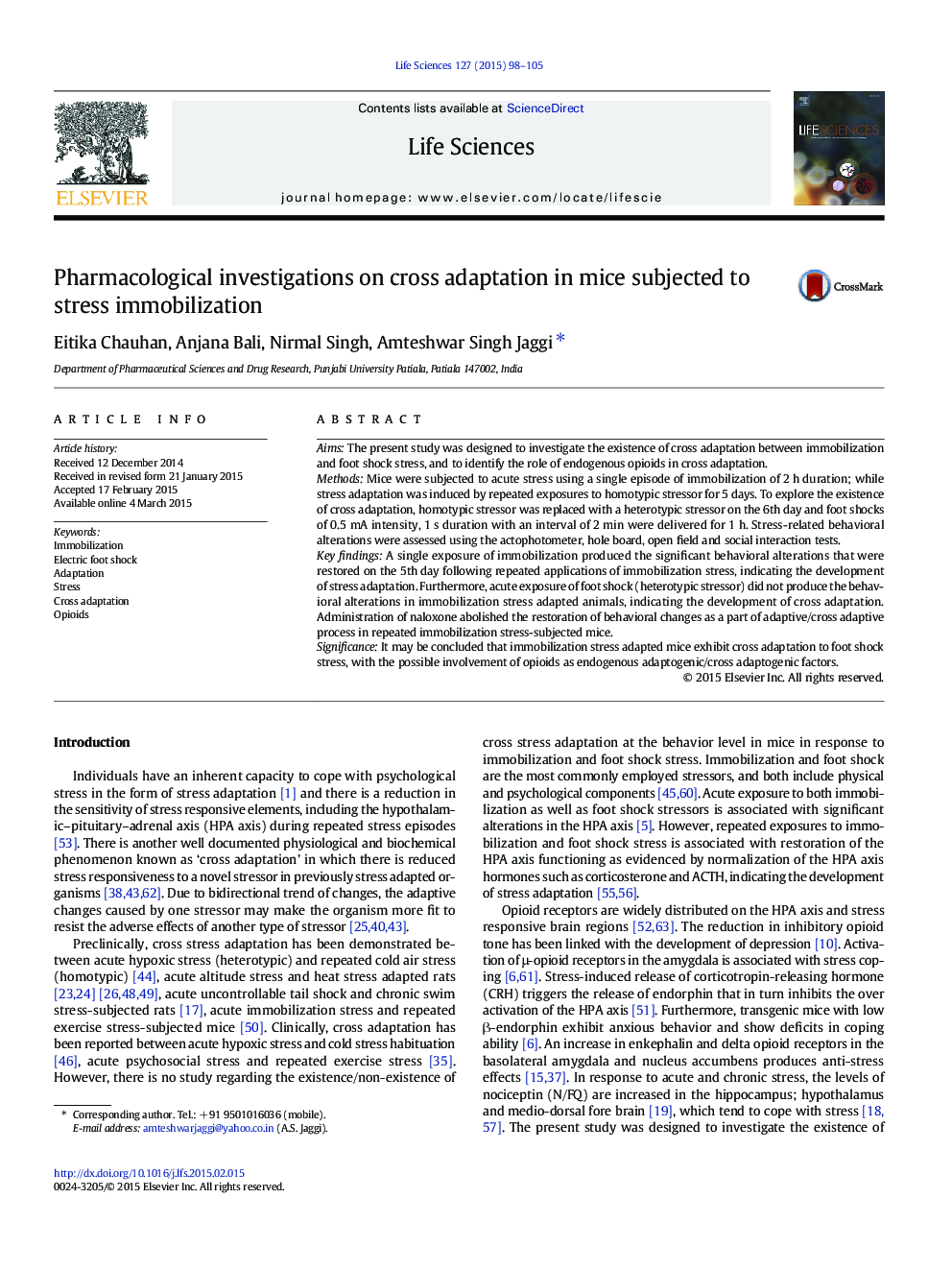| Article ID | Journal | Published Year | Pages | File Type |
|---|---|---|---|---|
| 5841784 | Life Sciences | 2015 | 8 Pages |
AimsThe present study was designed to investigate the existence of cross adaptation between immobilization and foot shock stress, and to identify the role of endogenous opioids in cross adaptation.MethodsMice were subjected to acute stress using a single episode of immobilization of 2Â h duration; while stress adaptation was induced by repeated exposures to homotypic stressor for 5Â days. To explore the existence of cross adaptation, homotypic stressor was replaced with a heterotypic stressor on the 6th day and foot shocks of 0.5Â mA intensity, 1Â s duration with an interval of 2Â min were delivered for 1Â h. Stress-related behavioral alterations were assessed using the actophotometer, hole board, open field and social interaction tests.Key findingsA single exposure of immobilization produced the significant behavioral alterations that were restored on the 5th day following repeated applications of immobilization stress, indicating the development of stress adaptation. Furthermore, acute exposure of foot shock (heterotypic stressor) did not produce the behavioral alterations in immobilization stress adapted animals, indicating the development of cross adaptation. Administration of naloxone abolished the restoration of behavioral changes as a part of adaptive/cross adaptive process in repeated immobilization stress-subjected mice.SignificanceIt may be concluded that immobilization stress adapted mice exhibit cross adaptation to foot shock stress, with the possible involvement of opioids as endogenous adaptogenic/cross adaptogenic factors.
